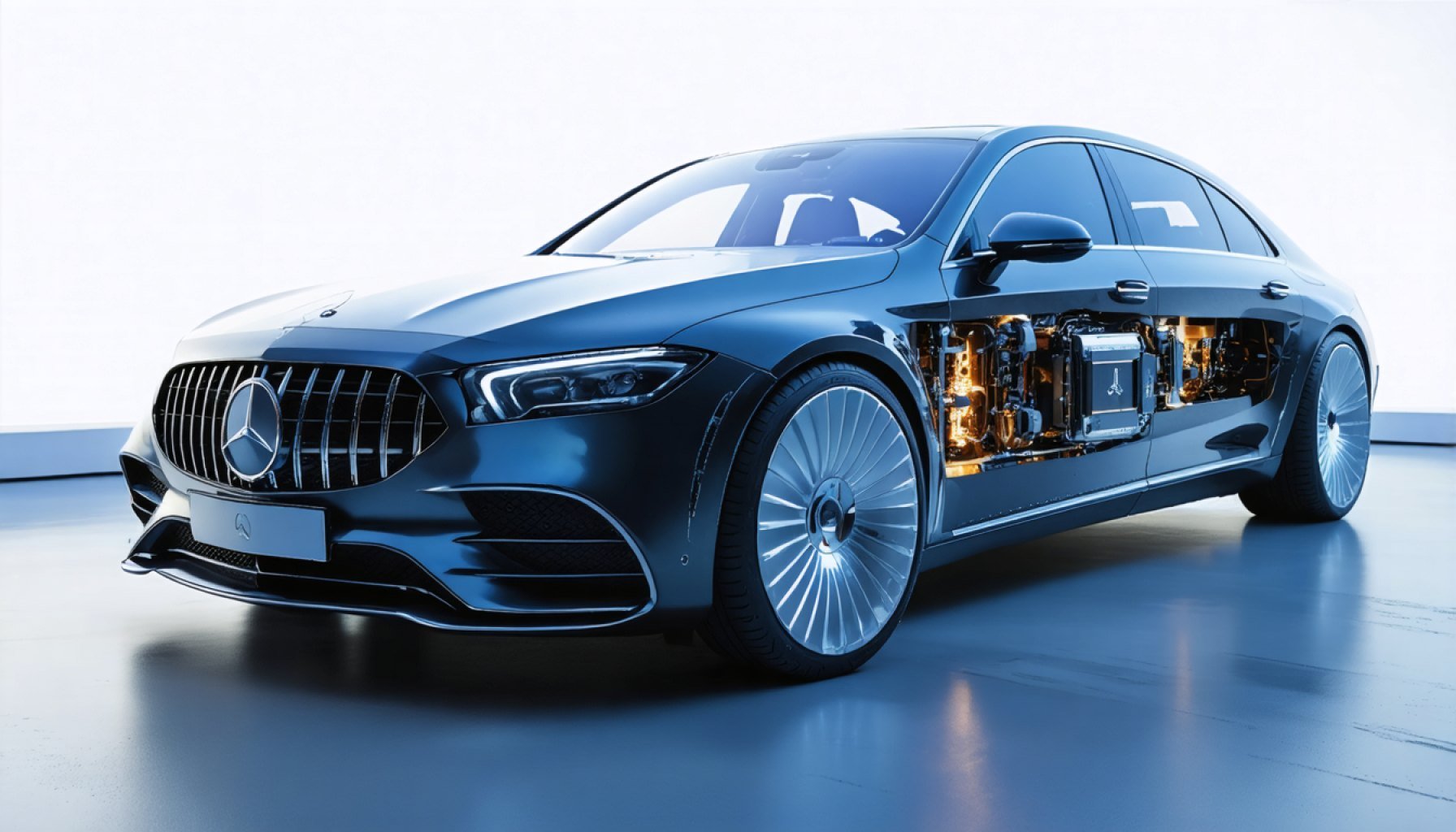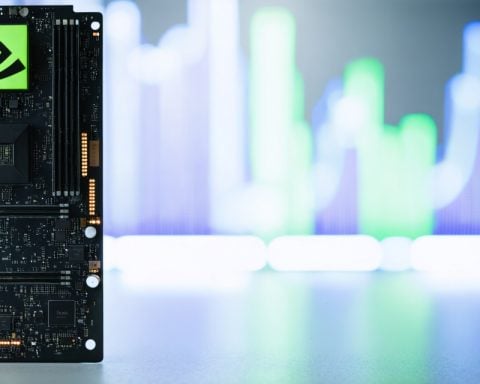- Mercedes-Benz is pioneering a breakthrough in electric vehicle range and efficiency with a solid-state battery prototype in the EQS model.
- The new battery, developed with Factorial, offers a significant range increase to over 621 miles, 25% more than current models.
- The solid-state battery uses a solid electrolyte and innovative lithium-metal anodes, enhancing safety and energy density.
- Mercedes-AMG’s expertise was key in integrating Factorial’s cells into a flexible, high-performance battery pack.
- Solid-state technology could revolutionize electric mobility, but scaling production remains a challenge.
- If successful, this innovation could redefine the electric vehicle landscape by the decade’s end.
Marking a pivotal moment in electric motoring, Mercedes-Benz embarks on a journey towards revolutionizing vehicle range and efficiency. Their latest prototype, hidden beneath the sleek facade of the EQS, harbors a groundbreaking solid-state battery, promising to redefine long-haul travel.
Imagine embarking on a road trip with over 621 miles unlocked in a single charge. This formidable range leap, nearly 25% more than the current EQS, is attributed to the daring quest for advanced solid-state battery technology. Developed hand-in-hand with U.S. innovators at Factorial, this battery promises to change how we view electric power.
Nestled within the heart of the EQS prototype is a clever convergence of engineering prowess and cutting-edge science. The solid-state battery shifts the paradigm by bidding farewell to the traditional liquid electrolyte. Instead, it adopts a robust solid electrolyte that renders the system not only safer but capable of harnessing new anode materials like lithium-metal. Such innovation positions the battery to deliver astonishing energy densities, heralding a new dawn for electric mobility.
For Mercedes, their high-performance journey didn’t stop at Formula 1 circuits. Drawing on the expertise of the Mercedes-AMG High Performance Powertrains division, they ingeniously integrate Factorial’s cells with a sophisticated battery pack featuring a patented floating cell carrier. Ingenious as it is, this pack morphs and adapts, breathing with the car’s heartbeat, as the cells expand and contract with charges and discharges.
The implications are profound. More than just enhanced range, the shift to solid-state technology hints at the future’s promise—batteries that are not just powerful but smartly integrated with other cell types within one seamless package. If the technology matures to commercial fruition by decade’s end, it will mark a tidal shift in the electric vehicle landscape.
Yet, the road to supremacy in solid-state technology isn’t without its hurdles. Scaling production remains a daunting barrier, one that Mercedes and other visionaries strive to overcome. Still, as the wheels of the EQS prototype turn, they set in motion a compelling narrative—an exploration of what lies ahead in the electric odyssey.
Revolution is seldom linear, but with relentless innovation, Mercedes-Benz is charting a course into an electrifying new realm.
Revolutionizing Electric Mobility: How Mercedes-Benz’s Solid-State Battery Technology Could Transform the EV Landscape
Unveiling the Future of Electric Vehicles
Mercedes-Benz’s latest innovation in solid-state batteries marks a transformative shift in the electric vehicle (EV) industry. By collaborating with U.S.-based battery developer Factorial, they are poised to revolutionize vehicle range and efficiency, offering over 621 miles on a single charge—a 25% leap over the current EQS model. This feat of engineering offers a glimpse into the future of sustainable transportation, with solid-state technology playing a pivotal role.
How Solid-State Batteries Work and Why They Matter
What sets solid-state batteries apart?
Traditional lithium-ion batteries use a liquid electrolyte, which can pose safety risks such as leaks and overheating. Solid-state batteries replace this liquid electrolyte with a solid form, enabling safer operation and the use of advanced anode materials, like lithium-metal, to achieve higher energy densities.
Key Benefits:
– Enhanced Safety: Reduced risk of leaks and overheating.
– Increased Energy Density: Allows longer range and efficiencies.
– Greater Longevity: Potential for longer battery life and durability.
Overcoming Challenges in Solid-State Battery Production
The transition to solid-state technology is not without challenges. Scaling up production to a commercial level remains a significant hurdle. Mercedes-Benz and its partners are investing heavily in R&D to address these issues, aiming to overcome manufacturing complexities and cost barriers by the decade’s end.
Industry Trends and Market Implications
Solid-State Battery Adoption:
As more automakers invest in solid-state technology, we can expect:
– Increased Range Across Models: The ability to drive longer distances between charges.
– Enhanced Charging Infrastructure: More emphasis on rapid charging capabilities.
– Broader Application in Hybrid Systems: Integrating with existing technologies for better overall vehicle performance.
Real-World Use Cases
Consumers can expect tangible benefits from these advancements:
– Long-Distance Travel: Enable cross-country trips without frequent charging stops.
– Energy Efficiency: Lower operating costs thanks to improved battery performance.
– Reduced Environmental Impact: Better energy consumption aligns with sustainable initiatives.
Pros & Cons Overview
Pros:
– Longer range and improved safety.
– Future-proof technology ready to integrate with new mobility solutions.
Cons:
– Production scale-up challenges.
– Initial high production costs.
Insights and Predictions
With solid-state batteries on the horizon, Mercedes-Benz is paving the way for an electrified future. If they can successfully navigate production and cost challenges, it will likely trigger a broader industry shift, pushing more automakers to adopt similar technologies.
Actionable Recommendations for Consumers
1. Stay Informed: Follow updates from leading EV manufacturers to understand how new technologies could impact your buying decisions.
2. Consider Long-Term Benefits: Look at the potential savings from increased range and efficiency when considering an EV purchase.
3. Explore Infrastructure Development: Be aware of advancements in charging networks to support long-distance travel plans.
For those interested in keeping up with the latest in the automotive industry, visit the Mercedes-Benz website at Mercedes-Benz for more information.














